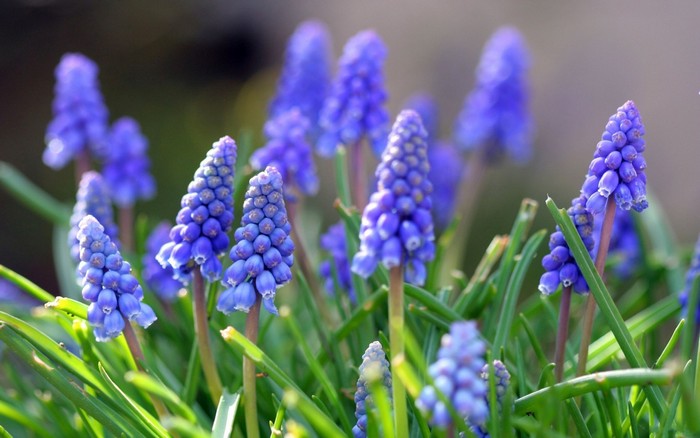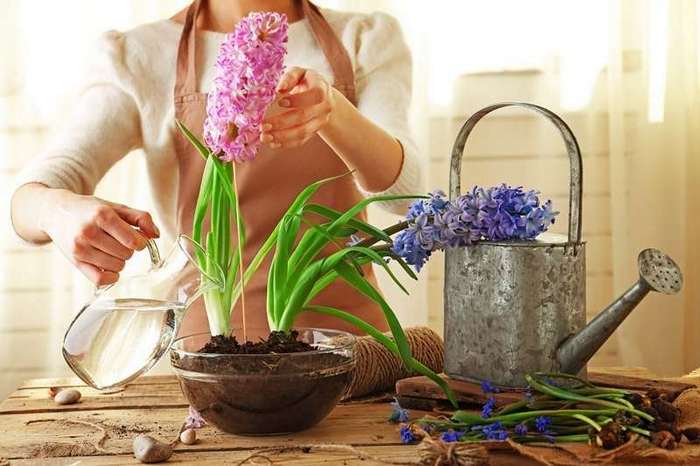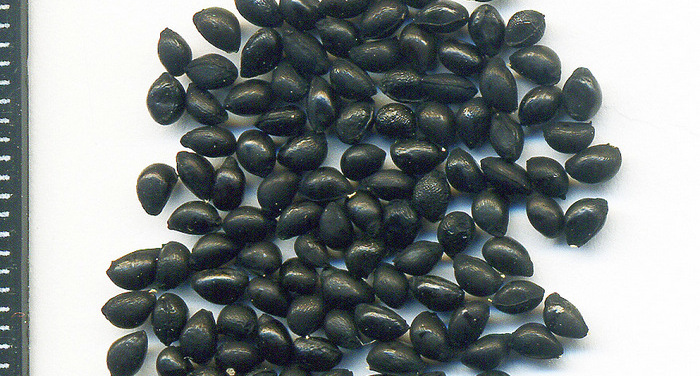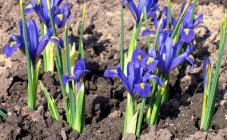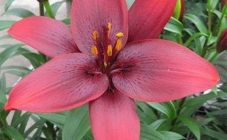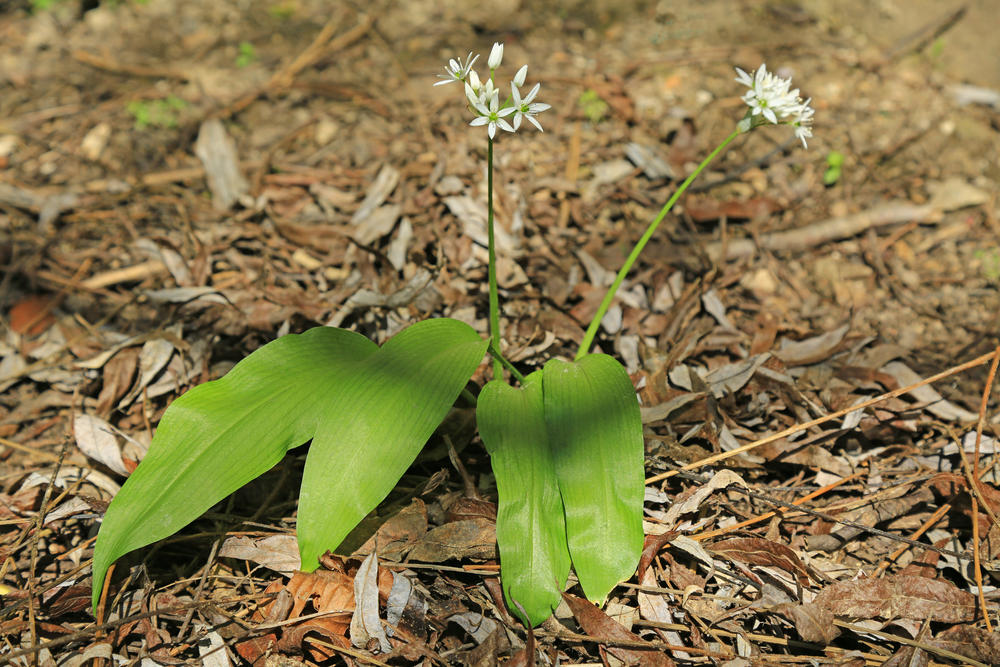Content:
Mouse hyacinth, or violin, is familiar to many flower growers. Cute, small, earliest muscari flowers fascinate with their bright flowering and extraordinary thirst for life. They are not afraid of the cold, but they love the sun and cannot stand stagnant water. How to plant, care and when to plant muscari in autumn is detailed below.
Agrotechnics
Since flowering occurs early, there are usually no problems with light - other plants in the garden have not yet covered with foliage. It is advisable to protect plants from strong winds. The best places to plant are in the hills, as muscari grow in the hills in the wild.
Plants do not need to be dug out for several years, so perennials are the best neighbors for them, which will also grow in one place for a long time. It is very convenient to grow them next to early bulbous flowers: tulips, daffodils, hazel grouses. The main condition for planting mouse hyacinth is permeable soil. If the water stagnates, the plant may die. For this reason, clay soil is not suitable for muscari - it retains moisture. The soil should be loose and fertile, with good drainage.
When to plant muscari?
Young bulbs are planted in the ground in autumn, from mid-September to late October. The main thing is that the average daily temperature is above +5 ° C, otherwise the plants will not have time to take root. When buying, you need to carefully choose the planting material. Muscari bulbs, although small, are still better to choose among them the largest, healthy specimens with children. They should not be damaged, stained, rotted, darkened.
In the spring of April, blooming mouse hyacinths are sold in boxes. They can be planted directly into the open ground. This is a somewhat risky venture, as these are very fragile and delicate plants. However, there is a chance that they will take root.
Sometimes novice flower growers have a question about when to transplant muscari after flowering. It is not required to do this every year, the viper onion grows in one place for about 5 years. Over time, the bulb grows overgrown with children and weakens, flowering worsens or stops altogether. Then you can plant the muscari.
When it comes time to plant the muscari in the fall, the soil should already be prepared. This should be done a couple of weeks before planting. Dig up the soil and remove all weeds. If the soil is not very fertile, then humus or compost should be added in an amount of half a bucket per square meter. The day before planting, the soil is poured abundantly with water so that it is thoroughly saturated. The bulbs should be kept at a temperature of about 9-10 degrees for several days before planting so that planting in cold soil does not shock them. Before planting, the bulbs are disinfected in a pink solution of potassium permanganate for an hour.
Since mouse hyacinth does not tolerate stagnant moisture, you need to provide it with good drainage. For this, river sand is suitable, poured with a layer of 2-3 cm at the bottom of the landing hole. For large bulbs you need a hole 7 cm deep, for smaller ones - 3 cm. The distance between large plants is 5-10 cm, between small ones - 2-3 cm. If the bulbs are very small, they can be planted in a trench randomly.This will create a natural growth effect. After planting, the bulbs must be covered with soil and watered well.
Mouse hyacinth care
Growing this cute miniature plant does not present great difficulties for the grower. Since this is a very early flower, at the beginning of the growing season it has enough moisture in the soil after melting snow and spring precipitation. If the spring is dry, then watered during flowering. During the second part of the life cycle of muscari, the dormant period, they do not need watering.
From fertilizers, you can use diluted organic matter. The first time the plants are fed at the germination stage, the second - at the stage of bud formation. During flowering, which lasts an average of 3 weeks, faded peduncles must be removed. After watering, the soil must be loosened very carefully so as not to damage the bulbs. You can use a popular garden technique - mulching.
To prepare the bulbs for the dormant stage, remove all flower stalks and feed the plants. For this, phosphorus-potassium fertilizers are used. You can also apply a complex fertilizer for flowers. After the leaves die off completely, caring for the muscari ends. You can dig up a few bulbs for winter distillation on a windowsill. A muscari transplant after flowering is required once every 5 or even 10 years.
Reproduction of muscari
Muscari give many babies, so it is not difficult to breed them. Small bulbs are perfectly separated from the mother. Also, these plants reproduce easily by self-seeding. However, this approach leads to erratic growth, damage to the appearance of the flower bed and shrinking of flowers. Therefore, immediately after the end of flowering, the peduncles are removed. You can leave a few pieces for sowing. Muscari seeds are small, black, they ripen in capsules. Germination is maintained only during the year, so they should be sown in the fall.
It is better to sow seeds on a growing bed. The soil is loose, sandy loam; before sowing, it will not hurt to add compost in the amount of 5 kg per 1 sq. m. Since the seeds are small, the planting depth is 1-2 cm. In the spring, thin tender shoots appear, which require watering and feeding, like adult bulbs. The main thing is not to allow the topsoil to dry out, since barely sprouted sprouts do not have a root system to look for moisture underground. In this case, stagnant water will lead to rotting of seedlings. In the fall of next year, you can transplant the grown bulbs to a permanent place. The flowering of muscari grown from seeds begins two to three years after germination.
Muscari transplant
A signal that the bulbs are weakened and require replanting is the weakening of flowering or its complete cessation. When to dig up muscari and how to store until planting in the fall:
- At the beginning of summer, when all the flowers of the plants wither and the ground part begins to actively dry out, they are carefully dug out, trying not to damage them. It is better to do this in dry, clear weather.
- The resulting small baby bulbs must be carefully separated from the mother bulb, cleaned of dirt and leaf residues.
- Next, the bulbs are dried under a canopy or in a dry ventilated room.
- After drying, healthy and large bulbs are selected.
- Selected planting material is placed in boxes with peat or slightly damp sand.
- The boxes are stored at a temperature of 15-17 degrees and an air humidity of about 70%.
- Bulbs should be checked regularly. Instances with traces of rot or other flaws are removed.
Forcing bulbs
Muscari can be grown at home. To do this, 4-5 months before the desired flowering time, the bulbs must be placed in paper bags and kept for a month at a temperature of +9 C.Then for 3-4 months the planting material is kept in a refrigerator at a temperature of 5 ° C. After the preparatory measures, you can start planting the mouse hyacinth in pots. There should be good drainage from expanded clay and river sand at the bottom of the tanks. Loose fertile soil is moistened and the bulbs are placed in it to a depth of 2 cm. The top of the bulb should be open. For a couple of days, you need to hold the pots at a temperature of 10 degrees, then you need to increase it to 15. After a few more days, you can bring the containers with muscari to room conditions. Flowering occurs after two weeks, lasts about 3 weeks.
If you plant muscari in your garden, they will decorate it in early spring, when everything is still gray and dull. They look great in group plantings on the lawn, in rabatkas and rock gardens. This cute, unpretentious flower grows even in the harsh climate of Siberia and the Urals, so it is loved by flower growers in the northern regions of Russia. In addition, planting and caring for muscari in the open field does not require special skills and even a novice gardener will be able to do it.
